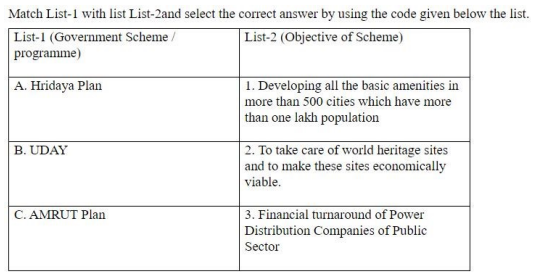Question
The average of five consecutive odd numbers is 45. What
is the average of the first three numbers among them?Solution
ATQ, Let the first number be 'y'. So, the numbers are y, (y + 2), (y + 4), (y + 6), (y + 8). ATQ: y + y + 2 + y + 4 + y + 6 + y + 8 = 45 × 5 Or, 5y + 20 = 225 Or, 5y = 205 Or, y = 205 / 5 = 41 So, the first three numbers are 41, 43, and 45. Required average = (41 + 43 + 45) / 3 = 129 / 3 = 43. Alternative solution: If the average of five consecutive odd numbers is 45, then the third number is 45 (since the average is equal to the middle term). So, the 2nd and 1st numbers are 43 and 41, respectively. So, the average of 41, 43, and 45 is 43 as the three numbers are also consecutive odd.
The 'Right to Work' plan, under the National Rural Employment Guarantee Act, 2005, was implemented in how many districts in the first phase?
What type of cyberattack involves stealing personal information by connecting a malicious USB device into your phone or laptop while charging?

Kamala Harris, Vice President Elect of USA wrote a children book, what is the name of the book?
The oldest Veda is the Rigveda, composed about _______ years ago.
The spread of which of the following diseases are not caused by mosquitoes:
(i) Malaria
(ii) Leptospirosis
(iii) Chikungunya
(iv) Typhoid
Trade liberalisation has helped India improve its _____________ in industries with medium-to-high technology content.
Which of the following elements has the highest thermal conductivity of any element and the highest light reflectance?
Who among the following athletes has won the men's 100 meters sprint at the recently concluded IAAF World Athletics Championships in London?
The 2016 World Economic Forum Annual Meeting took place in-
Relevant for Exams:


